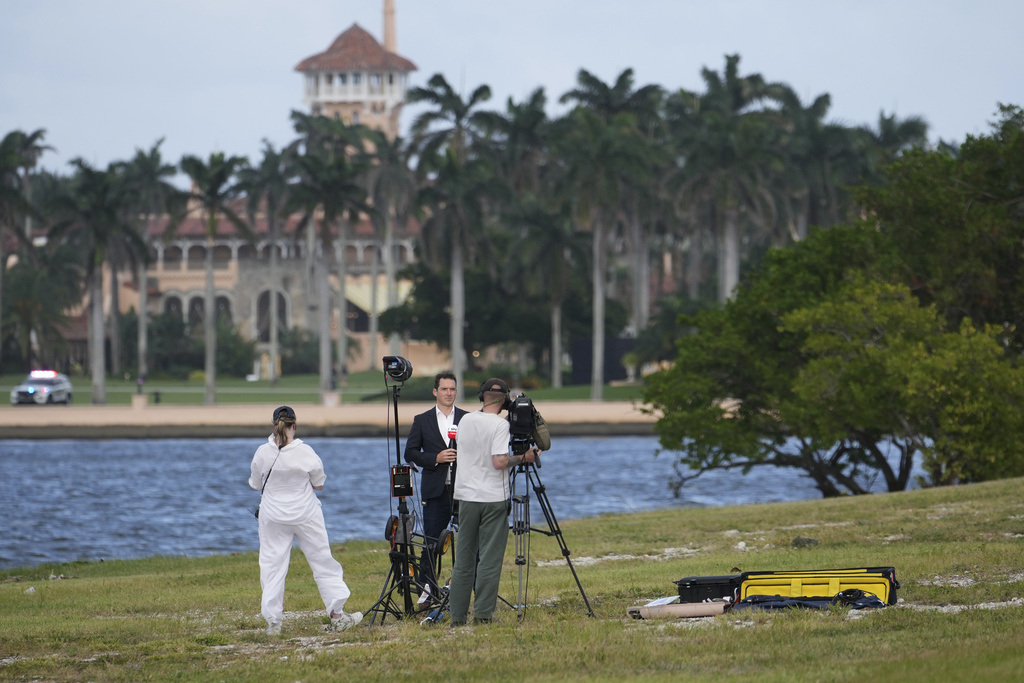Trump’s Quiet Mar-a-Lago Transition: Key Picks Revealed \ Newslooks \ Washington DC \ Mary Sidiqi \ Evening Edition \ Since his 2024 election win, President-elect Donald Trump has been laying low at Mar-a-Lago, strategizing his second-term administration with close allies like Elon Musk. Away from the public eye, Trump has moved quickly to appoint senior staff and cabinet members, marking a distinct approach from his first transition in 2016. From high security at Mar-a-Lago to intense jockeying for cabinet positions, Trump is creating a team he hopes will reflect his goals on immigration, national security, and government efficiency.
Trump’s Private Mar-a-Lago Transition: Key Details
- Low-Profile Strategy: Trump is quietly organizing his administration at Mar-a-Lago, avoiding the media spotlight.
- Inner Circle’s Role: Trusted advisers, including Elon Musk and Susie Wiles, are deeply involved in staffing decisions and policy development.
- Increased Security: After recent assassination attempts, Mar-a-Lago is heavily fortified, with limited access for outsiders.
- Musk’s Influence: Musk plays a critical advisory role, especially on efficiency initiatives and foreign policy.
- Fast-Paced Appointments: Key appointments, including Stephen Miller and Elise Stefanik, were made quickly as Trump builds a loyal team.
Deep Look
Surrounded by key figures such as Elon Musk and campaign chief-turned-chief of staff Susie Wiles, Trump is laying the foundation for his new administration with intense deliberation. Mar-a-Lago, now a strategic center for Trump’s transition efforts, has become a hive of activity as he works on top government appointments, foreign policy, and domestic agendas. Musk, a constant presence, is heavily involved, advising on multiple fronts from efficiency reforms to policy goals, earning him a place as one of the most influential voices in Trump’s circle.
This strategic environment is highly guarded. With Mar-a-Lago now even more fortified due to recent assassination attempts, the club’s entrance is fully barricaded, guarded by the Palm Beach County Sheriff’s Office, Secret Service, and other law enforcement. Unlike the relatively accessible Trump Tower lobby in 2016, where media coverage of visitors provided transparency into Trump’s cabinet formation, Mar-a-Lago is far more secluded. The closed-off environment allows Trump to work without public scrutiny but has left political observers with limited insights into his selections.
Trump’s second-term transition approach also contrasts sharply with his own 2016 strategy, which often resembled a reality show with frequent public appearances and updates. Eight years ago, Trump invited media coverage, holding meetings at Trump Tower in New York and later at his Bedminster, New Jersey golf course. He would regularly descend from the Trump Tower elevator, sometimes to update the press or introduce potential appointees. In a particularly memorable moment that year, he posed for photos with rapper Kanye West (now Ye) and remarked that they had “been friends for a long time.” The transparency gave media and political watchers a sense of the administration he was assembling.
This time, Trump’s choices are announced through statements and posts on his platform, Truth Social, while his activities and interactions are occasionally shared by club members or guests at Mar-a-Lago. Videos have shown Trump mingling with members, including a moment where he was seen dancing to “YMCA” on a packed patio. His family and closest allies, including Musk, are often at his side; Musk even joined a family photo on election night, adding a personal touch to his ongoing presence.
Amid the quiet work of staffing and planning, Trump’s second-term appointments are progressing quickly. Unlike the slower pace of 2016, where Trump waited days after the election to announce key figures, he has moved swiftly this time, already naming Susie Wiles as chief of staff and Stephen Miller as deputy chief of staff for policy. Wiles, known for her disciplined management style, brings continuity from Trump’s campaign to the White House, while Miller, a longstanding advocate of strict immigration policies, will likely drive the administration’s approach on border issues. Trump also selected Tom Homan as “border czar,” Elise Stefanik as U.N. ambassador, and former Rep. Lee Zeldin to lead the Environmental Protection Agency.
The atmosphere within Mar-a-Lago reflects Trump’s characteristic competition and loyalty tests, creating what some insiders liken to “Game of Thrones.” Former Trump officials have described the scene as a high-stakes environment where hopefuls jostle for influence and positions in the administration. While the informal setting of Mar-a-Lago contrasts with the open media presence at Trump Tower, the competitive nature of Trump’s inner circle remains unchanged, with familiar faces from his first administration now joined by fresh contenders.
Trump’s Mar-a-Lago strategy may signal a deliberate shift in how he plans to approach his second term, focusing on close-knit decision-making rather than high-profile optics. This approach allows him to maintain a level of privacy and control while assembling a team aligned with his objectives and loyal to his vision for America. As his second term shapes up, Trump’s new team appears to be both deeply loyal and strategically aligned with the priorities he has set out, from strengthening borders and cutting federal spending to reshaping U.S. foreign policy.







